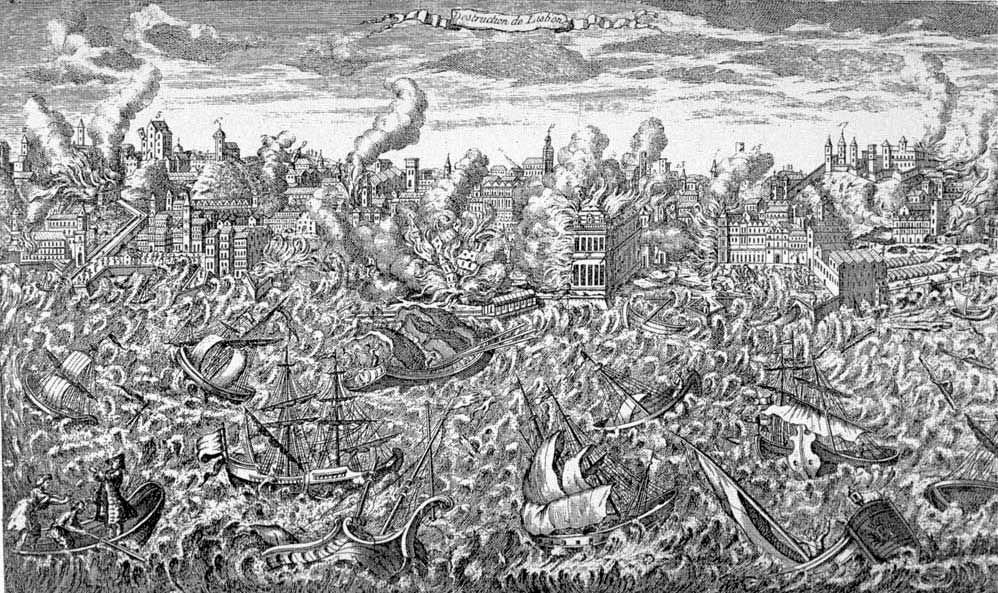|
Estêvão De Brito
Estêvão de Brito (c. 15701641) was a Portuguese composer of polyphony. Life Estêvão de Brito was born in Serpa, Portugal. He studied music at the Cathedral of Évora with Filipe de Magalhães. In January 1597 he was already ''mestre de capela'' of the Cathedral of Badajoz (Spain), where he stayed until 1613. In that year, he went to the cathedral of Málaga and succeeded Francisco Vásquez bearing the same office as Cristóbal de Morales, precisely 50 years before. He stayed in Málaga until his death in 1641. Work It is known that de Brito composed numerous ''villancicos'' and '' cançonetas,'' most of them for the Christian feasts of Christmas and Corpus Christi. Unfortunately, these works were lost due to the devastation of the 1755 Lisbon earthquake. However, the most relevant in de Brito's work are the liturgic pieces: 4-, 5-, 6-, and 8-voice masses, motets, psalms, and hymn A hymn is a type of song, and partially synonymous with devotional song, specifically wri ... [...More Info...] [...Related Items...] OR: [Wikipedia] [Google] [Baidu] |
Portugal
Portugal, officially the Portuguese Republic, is a country on the Iberian Peninsula in Southwestern Europe. Featuring Cabo da Roca, the westernmost point in continental Europe, Portugal borders Spain to its north and east, with which it shares Portugal-Spain border, the longest uninterrupted border in the European Union; to the south and the west is the North Atlantic Ocean; and to the west and southwest lie the Macaronesia, Macaronesian archipelagos of the Azores and Madeira, which are the two Autonomous Regions of Portugal, autonomous regions of Portugal. Lisbon is the Capital city, capital and List of largest cities in Portugal, largest city, followed by Porto, which is the only other Metropolitan areas in Portugal, metropolitan area. The western Iberian Peninsula has been continuously inhabited since Prehistoric Iberia, prehistoric times, with the earliest signs of Human settlement, settlement dating to 5500 BC. Celts, Celtic and List of the Pre-Roman peoples of the Iberia ... [...More Info...] [...Related Items...] OR: [Wikipedia] [Google] [Baidu] |
1755 Lisbon Earthquake
The 1755 Lisbon earthquake, also known as the Great Lisbon earthquake, impacted Portugal, the Iberian Peninsula, and Northwest Africa on the morning of Saturday, 1 November, All Saints' Day, Feast of All Saints, at around 09:40 local time. In combination with subsequent fires and a tsunami, the earthquake almost completely destroyed Lisbon and adjoining areas. Seismologists estimate the Lisbon earthquake had a magnitude of 7.7 or greater on the moment magnitude scale, with its epicenter in the Atlantic Ocean about west-southwest of Cape St. Vincent, a cape in Algarve region, and about southwest of Lisbon. Chronologically, it was the third known large-scale earthquake to hit the city (following those of 1332 and 1531 Lisbon earthquake, 1531). Estimates place the death toll in Lisbon around 30,000–40,000. A further 10,000 may have died in Morocco. The earthquake accentuated political tensions in Portugal and profoundly disrupted the Portuguese Empire. The event was widely di ... [...More Info...] [...Related Items...] OR: [Wikipedia] [Google] [Baidu] |
17th-century Portuguese Classical Composers
The 17th century lasted from January 1, 1601 (represented by the Roman numerals MDCI), to December 31, 1700 (MDCC). It falls into the early modern period of Europe and in that continent (whose impact on the world was increasing) was characterized by the Baroque cultural movement, the latter part of the Spanish Golden Age, the Dutch Golden Age, the French ''Grand Siècle'' dominated by Louis XIV, the Scientific Revolution, the world's first public company and megacorporation known as the Dutch East India Company, and according to some historians, the General Crisis. From the mid-17th century, European politics were increasingly dominated by the Kingdom of France of Louis XIV, where royal power was solidified domestically in the civil war of the Fronde. The semi-feudal territorial French nobility was weakened and subjugated to the power of an absolute monarchy through the reinvention of the Palace of Versailles from a hunting lodge to a gilded prison, in which a greatly expanded r ... [...More Info...] [...Related Items...] OR: [Wikipedia] [Google] [Baidu] |

